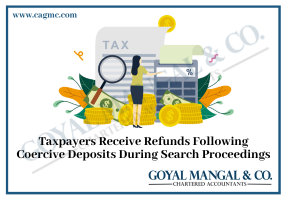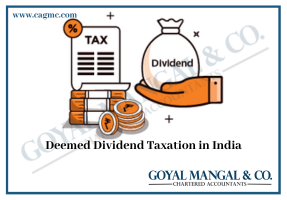| Table of Content |
SPV is also called Special Purpose Entity (SPE) or Special Purpose Corporation (SPC) is given to an entity which is established for a single, well-defined specific and narrow purpose. An SPV can only be formed for any lawful purpose and cannot be formed for any activities to be undertaken which are prejudicial or opposed to public policy. It is primarily a business organization of persons or entities that are eligible to participate in the association. SPV’s are mainly formed to raise funds by collateralizing future receivables.

Difference between a Company and Special Purpose Vehicle
SPV’s are basically formed to raise funds from the market. SPV’s are formed as Companies only and are governed by the provisions, rules and regulations of Companies Act, 2013 and is an artificial juridical person. A SPV enjoy all the rights and benefits as availed by the Companies incorporated under the Companies Act, 2013
The Members of an SPV are usually the Companies and Individuals sponsoring the entity. The scope of operation is limited in case of SPV whereas other Companies can perform all the activities permitted under the Memorandum of Association (MoA)
The MoA in the case of an SPV is quite narrow. This is primarily done to provide comfort to lenders who are concerned about their investment.
How to set up an SPV
A SPV must have promoter(s) or sponsor(s) just like a Company. Usually the Parent Company is the one who promote or sponsor the SPV. Being a Separate Legal Entity the assets and activities of a Company are not affected by the ups and downs of the originating entity and are distanced from the Parent Company.
The SPV’s are subject to fewer risks and thus provide great comfort to the lenders. The distance between the sponsoring company and the SPV is important. In the absence of adequate distance between the sponsor and the new entity, the later will not be an SPV but will only be a subsidiary company.
A good SPV should be independent of its sponsoring company which is different practically.
Advantages of setting up an SPV
- Separates the risk and freeing up the capital.
- Allowing securitization of assets without disturbing the managerial relationship.
- Leverage future earnings to raise funds.
- Asset transfer
- Direct ownership of specific asset.
- Legal Protection
Types of SPV’s
- SPV’s established by Banks/ Financial Institutions for Securitization: The total assets of banks or financial institution mainly comprise of loans and receivables along with their future cash flow to a separate entity, which may be formed for a specific purpose. The SPV is allowed to raise debt which will be backed by these receivables and their future cash flows. The difference between the incomes received from these receivables and cost of servicing that debt will be profit/earning of the SPV. By securitization through SPV the risk involved in this activity is separated from the general business of the bank.
- SPV’s formed by Government under PPP: We have witnessed a trend by government sector entities by forming SPVs for specific projects. The PSUs operating in infrastructure industry float entities with investment from Central and State Government and a portion by Private Sector Participant. It provides convenience in obtaining approvals from the State and Central Government at many levels. On completion of project easy exit route exists for government.
- SPV’s by FII: Foreign Companies also resort to SPV route by foreign companies to enter into areas of business in India, which are prohibited for them under Automatic route. The foreign policy does not permit foreign investors to invest in certain business activities in India without the approval from FIPB. As a result, the foreign investors take SPV route to reach the Indian Markets.
- Synthetic Leasing: SPVs can be used for acquiring assets indirectly so that they are prevented from being caught in the tax net. In this method, the sponsor takes the assets on lease from its SPV on rent. Expenses incurred as rent is allowed as a deduction to sponsor for income tax purpose. On the other hand, the SPV acquires the asset through raising debt, the interest on which is a deductible expense for tax purpose. This way the same asset can be used claim deduction by both. Apart from tax saving it prevents any debt being shown in Sponsor’s balance sheet.
- Real Estate Investment Trusts: The emergence of SPVs in the Indian market have led to the foundation of a new investment option for the Indian investors in the form of Real Estate Investment Trusts (“REITs”). It resembles to mutual fund, wherein several investors pool in funds with real estate as the underlying asset class. These will be regulated by SEBI and will give an opportunity for the public to invest in real estate projects through these REITs.
In India, Real Estate Investment Trusts and Infrastructure Investment Trusts are regarded as Special Purpose Vehicle of investment in real estate and infrastructure projects as it helps in mobilizing the public funds from India & abroad for various capital intensive projects.
SPV’s are extensively used by real estate players to plan structured investments and develop projects as joint ventures. Holding and financing property as a separate legal entity to fend off risk, since it allows the prime corporate to isolate the property from the other assets and liabilities they own. Further, it allows flexibility in structuring in the sense that different ways of raising capital can be used, depending on the investor. An SPV is capable of raising capital by issuing shares, and multiple share classes can be created to exercise control over it. Moreover, holding property through an SPV means that the property and the related contracts can be sold through an isolated vehicle instead of getting involved with tedious contracts, licenses, government permissions, which may be time consuming and involve complex counter party negotiations. There are tax benefits a well in light of the latest budget announced by the Indian Government.







